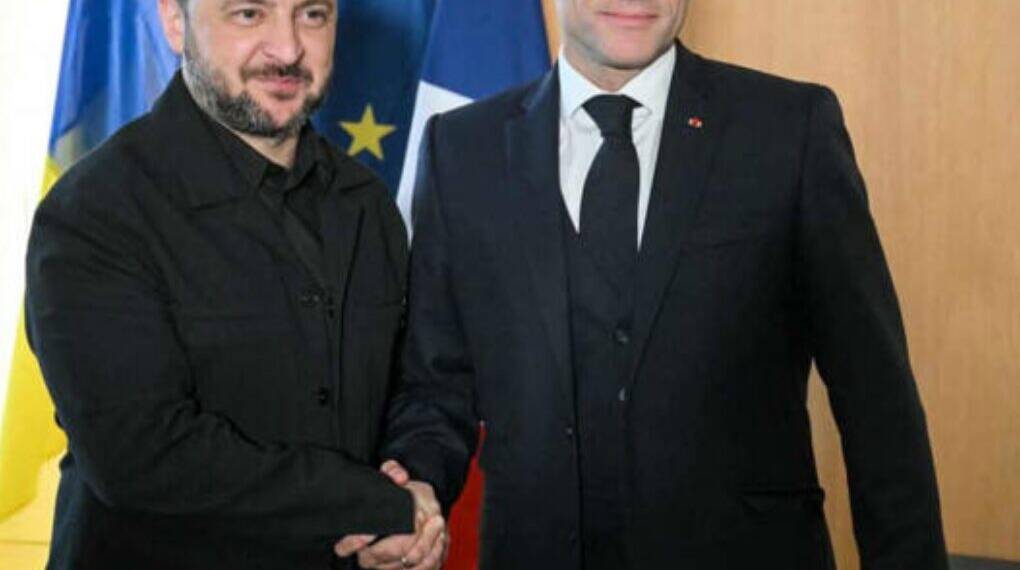In one of Europe’s most ambitious defense commitments since Russia’s full-scale invasion of Ukraine, French President Emmanuel Macron and Ukrainian President Volodymyr Zelensky on Monday signed a declaration of intent paving the way for Kyiv to acquire up to 100 Rafale fighter jets and a suite of advanced French air-defense systems. The agreement, announced at the Villacoublay Air Force Base outside Paris, marks a significant deepening of Franco-Ukrainian military cooperation as the war enters its fourth year.
The document — a letter of intent (LoI) rather than a binding procurement contract — outlines a 10-year roadmap for deliveries of the Rafale F4 multirole fighters, next-generation SAMP/T air-defense batteries, radar systems, drones, missiles, and precision-guided bombs. French officials described the LoI as a “reciprocal political commitment” meant to anchor Ukraine’s long-term defense posture against Russia.
“This is a historic agreement,” Zelensky declared after the signing ceremony, standing beside Macron with French-manufactured missiles and interceptors displayed in the background. “Ukraine will build one of the strongest air-defense systems in the world and create long-term military capabilities that will protect our people and our sovereignty.”
Macron echoed the sentiment, calling the plan a “major step” for strengthening Ukraine’s air power and rebuilding its armed forces at a time when Russian drone and missile attacks have sharply intensified. “We are embarking on a long-term partnership,” the French president said. “The Rafales — 100 Rafales — are what Ukraine needs, and France will stand with Ukraine until victory and beyond.”
Not Yet a Purchase Contract — but a Strategic Blueprint
Unlike earlier transfers of French equipment such as Caesar howitzers or SCALP long-range missiles, the Rafale deal is not immediate. The LoI sets the framework for future contracts to be negotiated and funded over the next decade.
According to the Élysée Palace, the first phase of cooperation will include:
delivery of drones, interceptor systems, and precision bombs “in the very short term,”
development of industrial partnerships for UAVs and munitions,
preparation for eventual pilot training, maintenance infrastructure, and production scaling.
The full package — 100 Rafales plus SAMP/T batteries and radar networks — will be implemented “across about 10 years,” officials said.
A Major Boost for France’s Defense Industry
The announcement sent shares of Dassault Aviation, the Rafale’s manufacturer, surging on European markets, underscoring the deal’s economic implications. France currently produces four Rafales per month and has 233 aircraft on order for various global customers.
Macron framed the partnership as both a strategic investment in European security and a boon for French manufacturing.
“This strengthens our industrial base and brings together French and Ukrainian expertise,” he said, noting that joint production lines for drones and components are being discussed.
Ukraine’s Long-Term Air Power Vision
The Rafale F4 — Europe’s premier multirole fighter — is considered a significant upgrade over Ukraine’s aging MiG-29 and Su-27 fleets. Capable of long-range precision strikes, reconnaissance, electronic warfare, and air superiority missions, the Rafale would give Kyiv a robust platform to challenge Russian dominance in the air.
The deal aligns with Ukraine’s broader modernization push. In 2025 alone, Kyiv has signed LoIs for:
100–150 Swedish Gripen jets,
expanded F-16 training programs,
and new drone-production partnerships across Europe.
Zelensky said the agreement was not about immediate battlefield needs alone but about “a secure future” for Ukraine once the war ends.
Funding Uncertain, Political Debate Intensifies
Despite the historic nature of the deal, funding remains unresolved. French media, including Le Monde, noted that financing could involve:
EU-level defense funds,
favorable long-term loans,
or proceeds from frozen Russian assets — a controversial proposal in European capitals.
Critics in France warn that the cost could reach tens of billions of euros over the next decade, raising questions about taxpayer burden and military industrial capacity.
Russian officials condemned the announcement as a “dangerous escalation,” while pro-Kremlin media framed it as Europe “dragging itself deeper” into the conflict.
A Signal to Moscow, Washington, and Europe
For Ukraine, still weathering near-daily missile and drone attacks and recent Russian advances in Zaporizhzhia, the symbolic value of the deal is nearly as important as the hardware itself. With U.S. support less predictable amid shifting political winds in Washington, the Rafale LoI signals that Europe is increasingly prepared to shoulder the security burden.
“This agreement is about tomorrow,” Zelensky said. “About rebuilding, about deterring, about ensuring Russia never threatens our freedom again.”
As negotiators work to translate the LoI into concrete contracts, the plan stands as one of the boldest European defense commitments of the war — and a testament to the deepening strategic bond between Paris and Kyiv.








